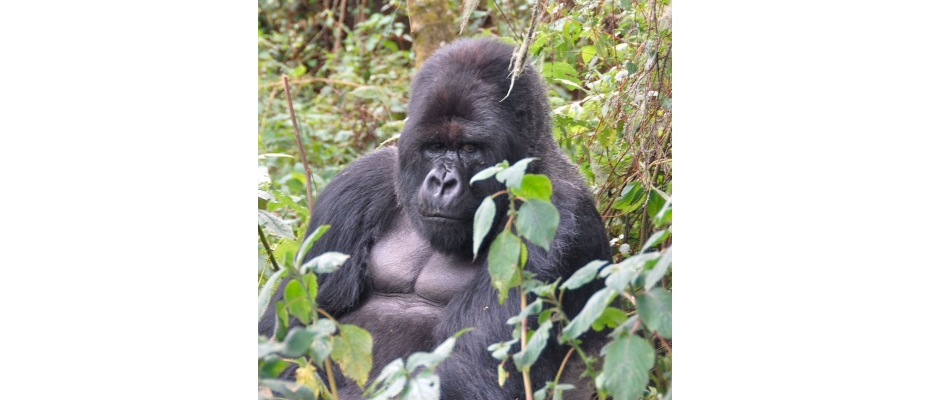
The first project to sequence the entire genome of the mountain gorilla has given scientists and conservationists a new insight into the impact of the decline in the population of these endangered apes that inhabit central Africa. Mountain gorillas are extensively inbred and the research published this week in Science allows us to be a little more optimistic than we might expect regarding the survival of the species as it concludes that mountain gorillas are genetically adapted to survive in small groups.
As Tomàs Marquès-Bonet, ICREA researcher at the Institute of Evolutionary Biology (IBE), a joint CSIC and UPF centre, and at the CNAG explains, "three years on from sequencing the first gorilla reference genome, and after sequencing more than a further thirty genomes, including that of the famous Copito de Nieve -Snowflake-, we can now compare them all, including that of the mountain gorilla, and begin to understand their similarities and differences, and the genetic impact of inbreeding".
Interested in learning how the reduction of the genetic variability affects mountain gorillas, the researchers were surprised to find that many harmful genetic variations have disappeared from the population through inbreeding, and that mountain gorillas are, therefore, genetically adapted to survive in small populations.
While there is concern that this low level of genetic diversity could make mountain gorillas more susceptible to environmental changes and endemic diseases, including infectious strains of human viruses, inbreeding has somehow been genetically beneficial for this species. "Through the data, we can see genetic drift and the process by which genomes create mechanisms to eliminate deleterious mutations due to their small population size", says Javier Prado-Martínez, co-first author of the study and researcher at the Institute of Evolutionary Biology (CSIC-UPF).
Using blood samples collected over several years by the Rwanda Development Board, the Institut Congolais pour la Conservation du Nature and by Gorilla Doctors, who treat wild gorillas wounded by traps, the researchers have been able to sequence the complete genomes of seven mountain gorillas for the first time (more than 1% of the total population).
Comparing these genomes with another seven genomes of gorillas from the eastern lowlands, their closest neighbours, they have noted that there are fewer harmful variants among the mountain gorillas, which variants can cause serious, often fatal health conditions. "This new understanding of genetic diversity and demographic history among gorilla populations provides us with valuable insight into how apes and humans, their closely related cousins, adapt genetically to living in small populations", explains Aylwyn Scally, one of the principal investigators of the study and a member of the Department of Genetics at the University of Cambridge.
Stable population for thousands of years
By analysing each genome, the researchers have also been able to determine how the size of the population of mountain gorillas has changed over the past million years. According to their calculations, the average population has numbered in the hundreds for thousands of years, far longer than previously believed.
The number of mountain gorillas living in the Virunga volcanic mountain range, on the border of Rwanda, Uganda and the Democratic Republic of Congo, fell to approximately 253 in 1981 as a result of the destruction of the habitat and hunting. Since then, conservation efforts led by the Rwanda Development Board and conservation organizations such as the Gorilla Doctors, and supported by tourists who want to see the famous gorillas thanks to primatologist Dian Fossey, have boosted the numbers which today reach approximately 480.
"We were worried that the dramatic decline in the 1980s would be catastrophic for the mountain gorillas in the long term, but our genetic analyses suggest that the gorillas have survived in small population sizes for thousands of years", says Chris Tyler-Smith, one of the principal investigators of the study and a member of the Wellcome Trust Sanger Institute. "Although comparable levels of inbreeding seem to have contributed to the extinction of our relatives the Neanderthals, mountain gorillas may be more resilient. There is no reason to think that they cannot continue like this for thousands of years to come".
It is hoped that the genomic data collected in this research will contribute to conservation efforts. With the map of the genetic differences between populations it will be possible to identify the origins of gorillas that have been illegally captured or killed. This will enable more gorillas to be returned to their natural habitat and make it easier to prosecute against those who illegally hunt gorillas for meat or for tourist souvenirs. The study also involved researchers Marc de Manuel, Irene Lobón and Jessica Hernández, all from the Institute of Evolutionary Biology (CSIC-UPF).
Work of reference:
Mountain gorilla genomes reveal the impact of long-term population decline and inbreeding.
Photograph: Mountain gorilla by Dave Proffer











